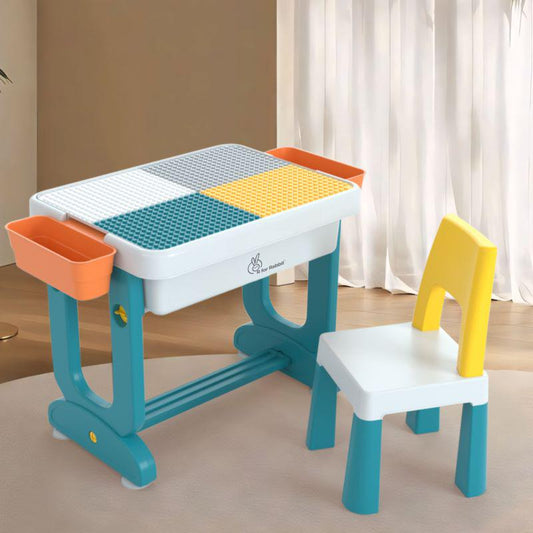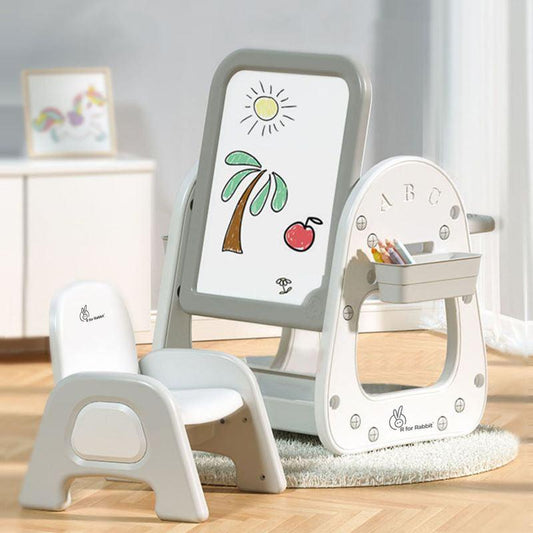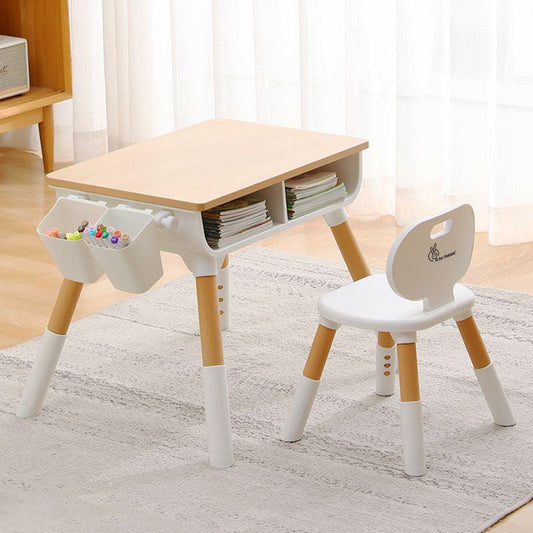8 Best Monsoon Diet Tips for Your Kids' Health

Monsoon brings with it a lot of excitement, puddles, paper boats, and that fresh, earthy smell. But while it is all fun and games outside, what happens inside our children’s bodies is another story.
This season sees a significant rise in infections, especially waterborne and foodborne illnesses. Kids, with their growing digestive systems and slightly weaker immunity, are the most vulnerable. The increased humidity and damp environment provide the breeding ground for bacteria, viruses, and fungi.
That means what your child eats, how it is cooked, and how often they eat can affect whether they enjoy the season or spend it sniffling and tired. A smart, seasonal diet plan packed with immunity boosters and safe practices can make all the difference.
So, if you are wondering what to feed children during monsoon, or looking for a healthy monsoon diet for children, you are in the right place. In this blog, we will walk you through eight expert-backed diet tips for kids during the rainy season.
Eight Diet Tips for Kids During Monsoon
The rainy season calls for extra care when it comes to your child’s diet. With the rise in infections and digestive issues, what they eat can directly impact their health and energy levels.
Here are eight essential diet tips for kids during monsoon to help them stay safe, strong, and happy.
1. Focus on Fresh, Home-Cooked Meals
There is nothing more comforting than a warm, home-cooked meal during a downpour. But this tip is not just about comfort, it is a top priority for hygiene and health during monsoon.
-
Avoid Street Food and Packaged Snacks
Street food, even if it looks tempting, is more likely to be contaminated. During monsoon, the open exposure of food stalls, combined with poor water quality and improper hygiene, becomes a haven for bacteria and viruses.
-
Use Fresh Ingredients with Minimal Processing
Even pre-packaged snacks can be a risk. With high moisture content in the air, packaging may not fully protect against mould or spoilage, especially in small stores with poor storage conditions.
2. Include Immunity-Boosting Foods
Your child’s immune system is their personal superhero, and it needs backup, especially when it is raining outside. A monsoon diet to prevent infection in kids must include immunity-boosting foods that are easy to source and even easier to use.
-
Add Turmeric, Tulsi, Ginger, and Garlic
Turmeric, with its unique anti-inflammatory and antimicrobial properties, is a great addition to milk, soups, or curries. Ginger and garlic offer warmth, boost digestion, and are known to combat viral infections. Tulsi is another powerhouse; make Tulsi tea or crush fresh leaves into warm water with honey.
-
Use Seasonal Fruits Rich in Vitamin C
Do not forget fruits! Seasonal fruits for kids in monsoon, like oranges, guavas, and pomegranates, are rich in Vitamin C, an essential nutrient for immunity. These fruits also hydrate the body and keep the digestive system clean.
3. Prefer Light and Easy-to-Digest Foods
Monsoon can slow down our digestion, and it is even tougher on kids. A healthy monsoon diet for children means going light, not just in portion size, but in the type of food served.
-
Offer Soups, Khichdi, and Boiled Vegetables
Heavy meals with too much oil, butter, or spices can sit in the stomach, undigested, for longer, leading to bloating, nausea, or diarrhoea. The damp weather naturally slows down metabolism, so heavy meals are not your child’s friend during monsoon.
-
Avoid Heavy, Oily, or Spicy Dishes
What should you serve instead? Think comfort food with nutritional balance. Khichdi (made with rice and moong dal), simple vegetable soups, or steamed rice with lightly spiced dals are excellent options. Add boiled or stir-fried veggies like carrots, beans, and spinach for fiber and nutrients.
4. Serve Only Boiled or Filtered Water
Water is the number one carrier of disease during the monsoon. Kids are at the highest risk because they may unknowingly drink unsafe water while playing or from outside sources.
-
Prevent Waterborne Infections
Boiling water kills all microorganisms, including bacteria and parasites. It’s the safest way to ensure that every sip is free of contaminants. Alternatively, use a trusted water filter, RO + UV types are usually ideal for monsoons.
-
Encourage Water Intake with Warm Fluids
Apart from monsoon food safety tips for toddlers and kids, you must also focus on encouraging water intake. As the weather feels cooler, kids may not feel thirsty, but dehydration can creep in silently. Add warm fluids like light soups, jeera water, or herbal teas to keep their fluid intake regular.

5. Avoid Raw Salads and Unwashed Fruits
Raw veggies and unwashed fruits are often seen as healthy, except during the rainy season. That is when they can be silent carriers of bacteria and parasites. What to feed kids during the rainy season depends a lot on how you prepare the food, not just what you choose.
-
Always Steam or Boil Vegetables
Start by cutting out raw salads from your child’s plate unless you can steam or boil the vegetables. Even then, limit salads to fresh, home-prepped versions where you can control the hygiene.
-
Wash Fruits Thoroughly or Peel Them
Always wash fruits thoroughly under running water, preferably soaking them in salt water or vinegar water for a few minutes before rinsing. Peeling fruits like apples and pears helps eliminate surface contaminants.
6. Limit Dairy Products to Prevent Cold
Dairy products are a staple in most children's diets, but during the monsoon, it needs a cautious approach. With the cool, damp weather and increased microbial activity, dairy products can turn risky if not handled or served properly.
-
Offer Lukewarm Milk or Curd
Warm milk not only feels comforting in the rainy season but also helps improve digestion and boost immunity, especially when combined with a pinch of turmeric or cardamom. Curd is another good option when served at room temperature.
-
Avoid Ice Cream or Chilled Dairy Drinks
Cold dairy products like ice cream, flavoured milk drinks, or refrigerated cheese slices should be avoided. They can cause throat infections or aggravate cold and cough symptoms in children.
7. Keep Meals Regular and Portion Controlled
Children are naturally active, and their energy demands do not drop even when the sky is gloomy. However, their digestive systems might not keep up in the same way during the monsoon.
-
Give Smaller, Frequent Meals for Better Digestion
The damp and cool weather tends to slow down metabolism. If your child skips meals and then eats a large amount later, it can lead to indigestion, bloating, or even nausea.
-
Include Snacks Like Roasted Nuts and Fruit Bowls
Structure your child’s day around 3 main meals and 2-3 small snacks. Start the day with a light, warm breakfast, like poha, idlis, or oats porridge. In the day, you can offer a bowl of fruit salad (with peeled and properly cleaned fruits) or a handful of roasted nuts like almonds or cashews.
8. Hydration and Healthy Fluids Matter
With the temperature dropping slightly during monsoon, kids may not feel as thirsty. But do not let the cooler weather fool you, dehydration is still a major risk, especially when your child is recovering from an infection or playing indoors.
-
Use Soups, Herbal Drinks, and Coconut Water
Soups are an excellent way to combine hydration and nutrition. Tomato soup, vegetable broth, or even dal-based soups are warm, comforting, and gentle on the stomach. Add ginger, garlic, and turmeric for an extra immunity punch.
-
Avoid Sugary Beverages and Carbonated Drinks
Not only do they offer zero nutrition, but they can even irritate the gut lining and increase acidity. This weakens the child’s immunity and leads to cravings for unhealthy snacks.
Also Read:
- Powerful Monsoon Illness Prevention Tips for Children
- How to Travel with a Baby in the Rainy Season
- Diaper Rash Prevention Methods In Humidity
- How to Keep Your Baby Dry and Comfortable During Rainy Days
- Hair Care Tips to Keep Your Kids Healthy in Monsoon Season
Key Takeaways
The monsoon is a magical time for children, but only when they are feeling their best. And that begins with their diet. As we have seen, it is not just about what your child eats, but how, when, and where food is prepared and served. Cleanliness, warmth, and balanced nutrition are the pillars of a safe rainy-season diet.
From fresh, home-cooked meals to immunity-boosting herbs, from proper hydration to wisely chosen seasonal fruits, every tip shared here is aimed at helping you build a monsoon diet to prevent infection in kids. It does not take fancy ingredients, just awareness and a bit of planning.
Keep meals small, timely, and rich in natural goodness. Monitor your child’s hydration and digestion, and listen to their body’s needs. Teach them the importance of eating clean and staying safe.
Because ultimately, the secret to a healthy monsoon diet for children is not in what is on the plate, it is in the love, care, and wisdom with which it is served.














